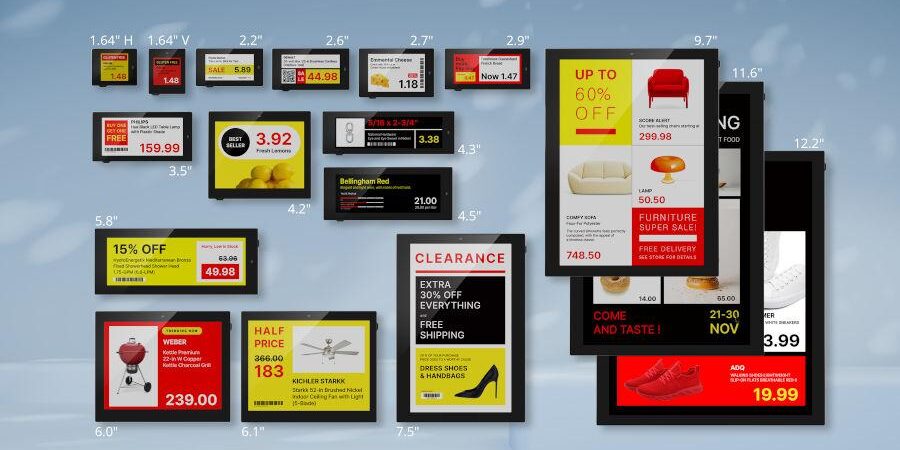Electronic Shelf Labels (ESL) bring a new standard of accuracy and speed to retail operations. Instead of manually replacing paper tags, prices and additional shelf information are updated digitally, centrally, and in real time. This allows the retailer to synchronize shelf, checkout, and online prices, while customers always see clear, up‑to‑date product information.
What are Electronic Shelf Labels (ESL) and how do they work?
An ESL is a wirelessly connected shelf display that shows the price, product name, barcode or QR code, promotions, and other details. The system communicates with the POS and ERP, so any change made in the master database is automatically reflected on each label. Price updates are fast, reliable, and extremely energy‑efficient — meaning that an ESL battery can last more than 10 years.
In practice, this allows stores to perform thousands of price changes within minutes, without paper waste or errors typical of manual processes. Price accuracy and display precision remain stable throughout the day, regardless of store traffic.
Benefits for retail: accuracy, speed, and lower costs with ESL
-
Reduced operational costs and time savings: no more walking aisles with paper labels; one person can manage the entire assortment from the back office.
-
Error elimination: shelf and checkout prices are always aligned, minimizing complaints, issues, and losses.
-
Faster promotions: seasonal, daily, or hourly campaigns become easy to implement, and prices can be instantly synchronized with online offers.
-
Better customer experience: information is clear, complete, and current; origin, allergens, weight, or savings can be displayed.
-
Sustainability: fewer paper labels mean less waste and lower logistics costs.
For retailers managing thousands of SKUs, centralized price management becomes essential. Dynamic pricing, reactions to stock levels or demand, and store‑specific local adjustments are achievable without on‑site strain.
Paper vs. electronic price labels: a practical comparison
Paper labels require printing, cutting, distribution, and physical replacement. Each change carries cost and risk of error. Electronic shelf labels eliminate most of these steps. For large retail chains, the operational difference is enormous — what used to take hundreds of hours now takes minutes.
ESL also simplifies regulatory compliance since data remains consistent throughout the system. Updates to VAT rates, currency, or measurement units are handled centrally without needing to visit each store.
Implementation steps and recommendations for ESL
-
Assess assortment and processes: map shelf types, temperature zones (refrigerators/freezers), lighting, and network conditions.
-
Integrate systems: connect ERP/POS, define data schemes, and price change logic.
-
Choose label formats: from small shelf displays to larger promotional screens.
-
Pilot in one store: measure work time, error count, sales impact, and customer experience.
-
Scale and train: standardize procedures and KPIs (accuracy, update speed, cost per change).
Princ is a company with extensive experience in electronic shelf labels, RFID solutions, and personalized PVC cards. We specialize in solving operational challenges specific to retail and logistics. A dedicated approach and strong integration ensure that technology becomes a tool for improving accuracy, accelerating operations, and increasing profitability — without harming the customer experience.
When the system is properly implemented, the retailer gains full control over pricing and transparent shelf information. Customers receive clear, accurate prices and relevant messages next to each product, while the store earns valuable time for tasks that create higher business value.

